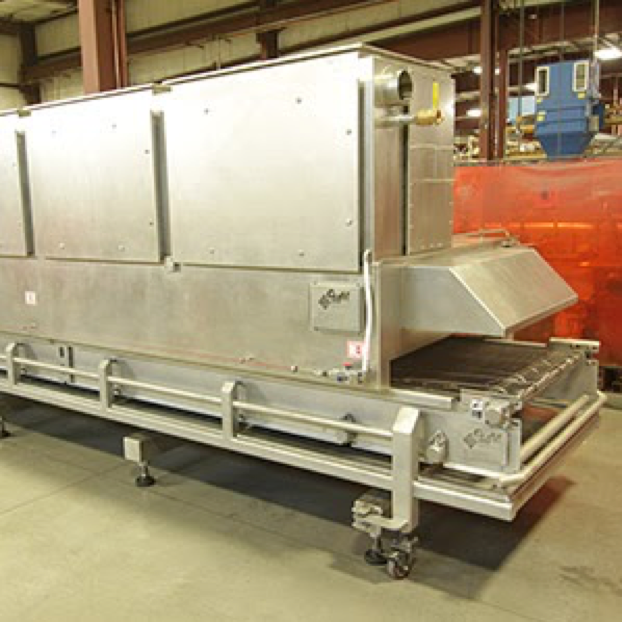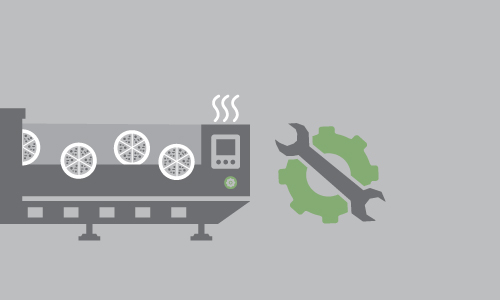Infrared cheese melters (IRs) use flashes of heat to fuse together dairy products before they are packaged. This process keeps smaller food items, such as pizza toppings, from becoming loose during transit.
Cheese melters are composed of various moving parts, including conveyor belts, heating units, and adjustable controls. Residue from food products can find its way into these mechanisms and slow down production. Performing regular maintenance checks can keep your cheese melter running smoothly for longer.

1. Clean the conveyor belt after every use
Clean all food particles from the conveyor belt and surrounding areas. Grease from heated cheese can clog delicate mechanisms and restrict movement. If moving parts become stuck, the entire system can break down.
Spraying the entire cheese melter with cleaning fluid or hosing it down with water can damage intricate areas of the machine. Corrosive chemicals, as well as water, can rust and break down electrical components and cause severe damage to the unit. Therefore, it is important to clean the machine carefully by hand and in sections. Take time to address each component and ensure all grease and residue have been removed using non-abrasive products.
2. Monitor all electrical components
Grease and heat, if left unchecked, can cause severe damage to electrical components and wiring. Perform daily checks on the unit and ensure that the connections are clean, secure, and free from pressure. If you find damaged wiring, replace it immediately. Keep common parts on hand for quick and easy replacements. The faster you can repair the unit, the faster you can continue production. However, complex electrical repairs should be completed by trained professionals.
3. Lubricate moving parts
Applying a lubricant to moving parts of the machine can help it run more efficiently. Only administer lubricants that can withstand high temperatures and are safe to use around food. Lubricants should be applied after the cheese melter has been thoroughly cleaned.
4. Ensure the unit is level
If the machine is moved during cleaning or other maintenance checks, ensure each component is replaced correctly. Crooked surfaces can cause an uneven distribution of heat, resulting in irregular melting patterns.
Furthermore, wiring or other delicate connectors must be clear from harm. If the unit is moved during the cleaning process, make sure the wiring has not been pinched or trapped in sections exposed to heat.
5. Hire a professional
On-site staff can address the majority of small maintenance issues that may arise during production. However, hiring an outside professional to conduct thorough annual or bi-annual maintenance checks can extend the life of the machine, saving you time and money on expensive repairs.
This is particularly true with custom machines. The unique structure and components of custom cheese melters may differ from that of standard models. Regularly scheduled maintenance checks by service professionals can ensure that each part of the machine is being cleaned correctly. If the unit must undergo repairs, a trained professional will be able to fix the issues and even prevent further damage from occurring.
Any equipment that includes moving parts and is regularly exposed to heat must be maintained daily, especially if organic food particles and grease can slip into the mechanisms. Creating a daily scheduled maintenance plan for your cheese melter can help you catch any issues before they become serious and keep the unit running for longer.




